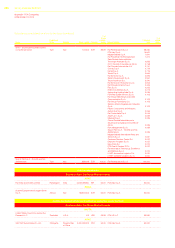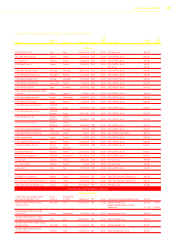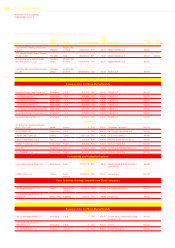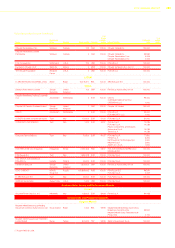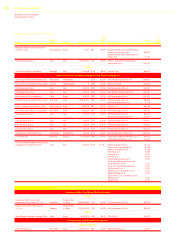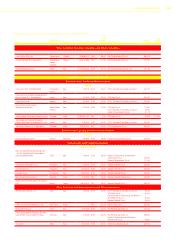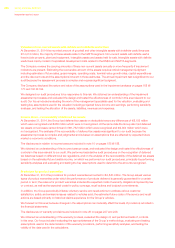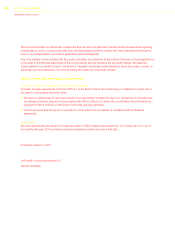Chrysler 2014 Annual Report Download - page 298
Download and view the complete annual report
Please find page 298 of the 2014 Chrysler annual report below. You can navigate through the pages in the report by either clicking on the pages listed below, or by using the keyword search tool below to find specific information within the annual report.
296 2014 | ANNUAL REPORT
Independent auditor’s report
Valuation of non-current assets with definite and indefinite useful lives
At December 31, 2014 the recorded amount of goodwill and other intangible assets with indefinite useful lives was
€14,012 million; the majority of these assets relate to the NAFTA segment. Non-current assets with definite useful
lives include property, plant and equipment, intangible assets and assets held for sale. Intangible assets with definite
useful lives mainly consist of capitalized development costs related to the EMEA and NAFTA segments.
The Company reviews the carrying amounts of these non-current assets annually or more frequently if impairment
indicators are present. Estimating the recoverable amount of the assets requires critical management judgment
including estimates of future sales, gross margins, operating costs, terminal value growth rates, capital expenditures
and the discount rate and the assumptions inherent in those estimates. The annual impairment test is significant to our
audit because the assessment process is complex and requires significant judgment.
The Company disclosed the nature and value of the assumptions used in the impairment analyses on pages 168 till
170 and 190 till 192.
We designed our audit procedures to be responsive to this risk. We obtained an understanding of the impairment
assessment processes and evaluated the design and tested the effectiveness of controls in this area relevant to our
audit. Our focus included evaluating the work of the management specialists used for the valuation, evaluating and
testing key assumptions used in the valuation including projected future income and earnings, performing sensitivity
analyses, and testing the allocation of the assets, liabilities, revenues and expenses.
Income taxes – recoverability of deferred tax assets
At December 31, 2014, the Group had deferred tax assets on deductible temporary differences of €8,182 million
which were recognized and €480 million which were not recognized. At the same date the Group also had deferred
tax assets on tax losses carried forward of €1,762 million which were recognized and €2,934 million which were
not recognized. The analysis of the recoverability of deferred tax assets was significant to our audit because the
assessment process is complex and judgmental and is based on assumptions that are affected by expected future
market or economic conditions.
The disclosures in relation to income taxes are included in note 10 on pages 185 till 188.
We obtained an understanding of the income taxes process, and evaluated the design and tested the effectiveness of
controls in this area relevant to our audit. We performed substantive audit procedures on the recognition of deferred
tax balances based on different local tax regulations, and on the analysis of the recoverability of the deferred tax assets
based on the estimated future taxable income, on which we performed our audit procedures, principally by performing
sensitivity analyses and evaluating and testing the key assumptions used to determine the amounts recognized.
Provisions for product warranties
At December 31, 2014 the provisions for product warranties amounted to €4,845 million. The Group issues various
types of product warranties under which the performance of products delivered is generally guaranteed for a certain
period or term; the reserve for product warranties includes the expected costs of warranty obligations imposed by law
or contract, as well as the expected costs for policy coverage, recall actions and buyback commitments.
In addition, the Group periodically initiates voluntary service and recall actions to address various customer
satisfaction, safety and emissions issues related to vehicles sold; the estimated future costs of the service and recall
actions are based primarily on historical claims experience for the Group’s vehicles.
We focused on this area because changes in the assumptions can materially affect the levels of provisions recorded in
the financial statements.
The disclosures on warranty provisions are included in note 26 on pages 227 and 228.
We obtained an understanding of the warranty process, evaluated the design of, and performed tests of, controls
in this area. Our focus included evaluating the appropriateness of the Group’s methodology, evaluating and testing
assumptions used in the determination of the warranty provisions, performing sensitivity analyses, and testing the
validity of the data used in the calculations.


